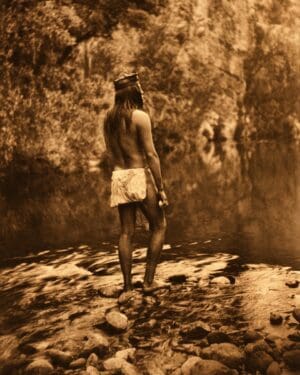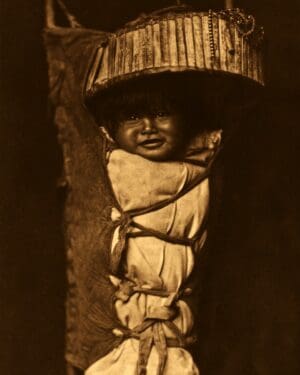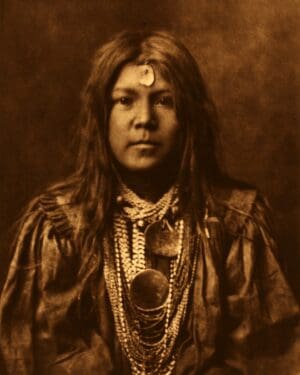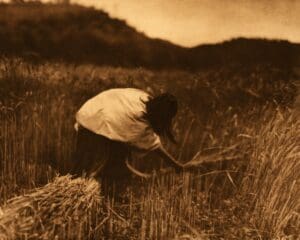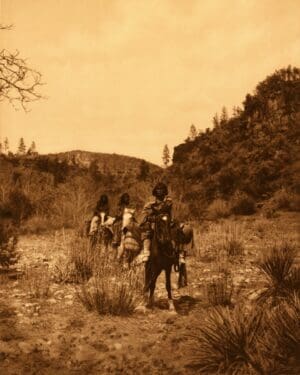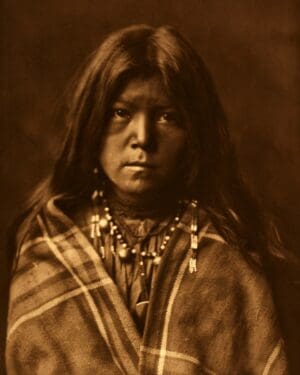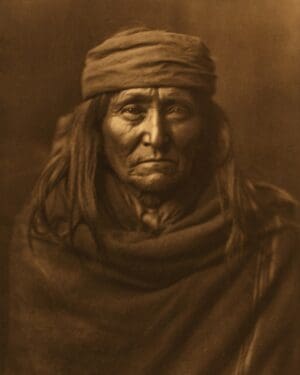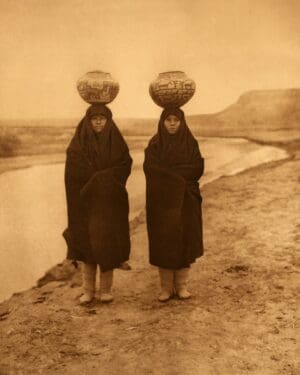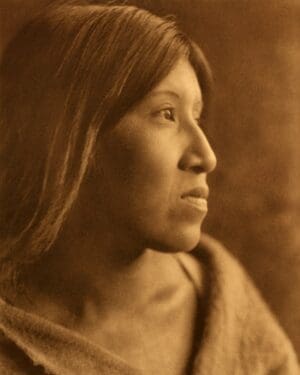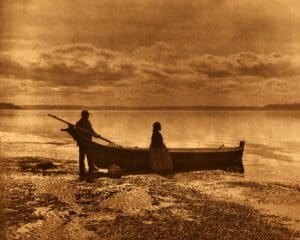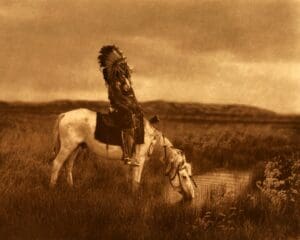Apache Native Americans
Apache Indian Photos by Edward S. Curtis
Tribal Summary
Dress
The primitive dress of the men was deerskin shirt, leggings and moccasins. They were never without the loin-cloth, the one absolutely necessary feature of Indian dress. A deerskin cap, with attractive symbolic ornamentation, was worn; but for the greater part the headgear consisted of a band braided from the long leaves of the yucca, which they placed rather low on the head to keep the hair from the eyes.
The dress of the Apache women consisted of a short deerskin skirt, high boot-legged moccasins, and a loose waist which extended to the hips and was worn outside the skirt. Both skirt and waist were ornamented with deerskin fringe and latterly with metal pendants.
The men’s hair always hangs loose; it is never braided. At time of mourning the hair is cut horizontally just above the shoulder line. Apache matrons, like the men, do not braid the hair, but let it hang loosely over the shoulders. The maidens tie their hair in a low long knot at the back of the head, to which is fastened a decorated deerskin ornament, denoting maidenhood. So arranged it is called pitsivesti, and the wrapping, tsige.
Dwellings
The Apache dwelling consists of a dome-shaped frame of cottonwood or other poles, thatched with grass. Average diameter at the base, twelve feet. The house itself they term kowa; the grast thatch, pi. Bear-grass, or what the Spanish term palmillo, is used exclusively in thatching. Since the institution of the Messiah religion the houses are built rather elongate in form, with a doorway in each end, and all the houses of the village arc arranged in long rows. Doorways are termed daitin, or chogunti, interchangeably. Summer houses are generally built at a distance from the winter houses, in fact wherever the Apache would have occasion to stop, and are little more than brush shelters to afford·temporary shade.
Food
No tribe is more capable of living on the natural products of their pristine haunts than the Apache. Whether allowed to live peacefully in the river valleys or driven in war to seek protection of impenetrable mountains, nature provided amply for their support; for practically all the flora and fauna indigenous to the Southwest are considered food by the Apache.
Showing 1–9 of 16 results
-
Sale!
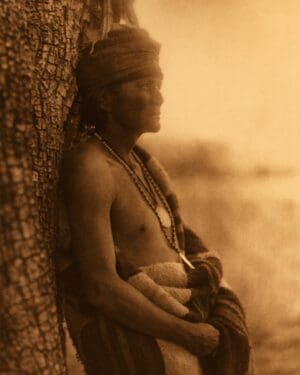
Alchise – Apache
$18.95 – $120.95 -
Sale!

Apache
$18.95 – $120.95 -
Sale!

Apache babe
$18.95 – $120.95 -
Sale!

Apache Nalin
$18.95 – $120.95 -
Sale!

Apache reaper
$18.95 – $120.95 -
Sale!

Apache-land
$18.95 – $120.95 -
Sale!

Chideh – Apache
$18.95 – $120.95 -
Sale!

Desert rovers – Apache
$18.95 – $120.95 -
Sale!

Eskadi – Apache
$18.95 – $120.95

